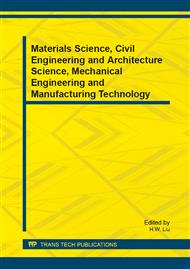p.938
p.942
p.947
p.951
p.955
p.961
p.966
p.970
p.975
Driver's Speed Decision-Making Model Based on ANFIS
Abstract:
To simulate the driver's ability to deal with uncertainty and solve the unsmooth problem in the driving-status-transformation between free-traveling and car-following during the microscopic traffic simulation, the Adaptive Neuro-Fuzzy Inference System (ANFIS) was introduced to model the driver's speed decision-making behavior which integrated the free-traveling and car-following behavior. The difference between velocity and desired speed was added into the inputs of the ANFIS model besides vehicle speed, relative distance and relative velocity which commonly appeared in car-following models. In this paper, the NGSIM (Next Generation Simulation) data was used to calibrate and evaluate the model. With the analysis and pretreatment of NGSIM data, drivers reaction time was calibrated, drivers were clustered into three categories according to the level of recklessness, and the desired speed of different driver characteristic in different vehicle was approximated as the corresponding free speed. Using the processed NGSIM data, the ANFIS model was trained and the model output was validated and compared with the original data. The results showed that the ANFIS model performed well. In addition, the output of ANFIS model under car-following state was compared with that of GM model. This comparison provided a better chance to analyze the performance of the model and showed that the model simulation the driving data in a more realistic way.
Info:
Periodical:
Pages:
955-960
Citation:
Online since:
January 2014
Authors:
Price:
Сopyright:
© 2014 Trans Tech Publications Ltd. All Rights Reserved
Share:
Citation:


